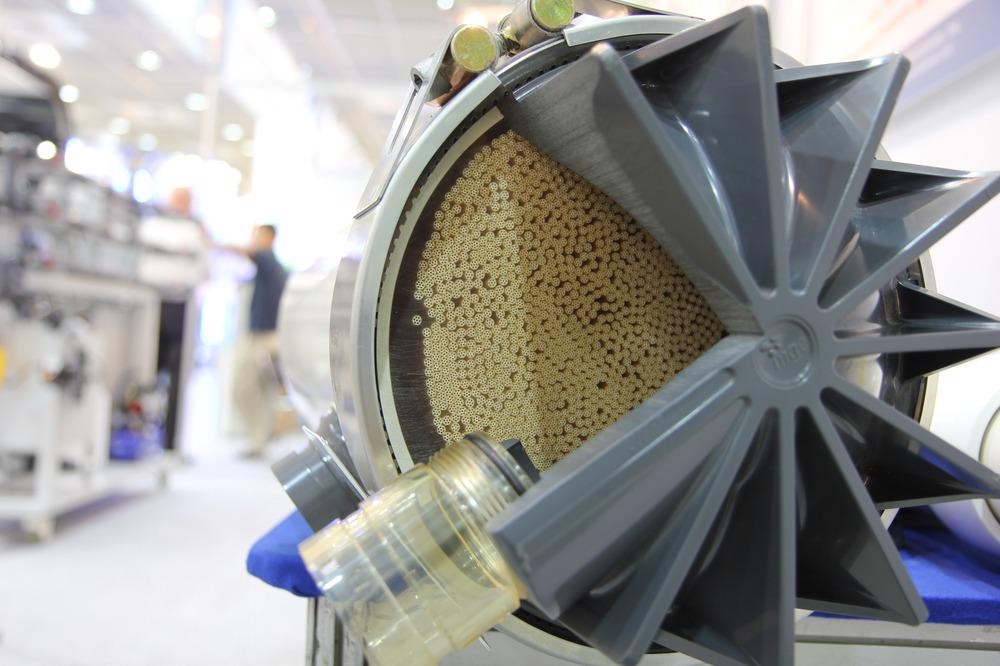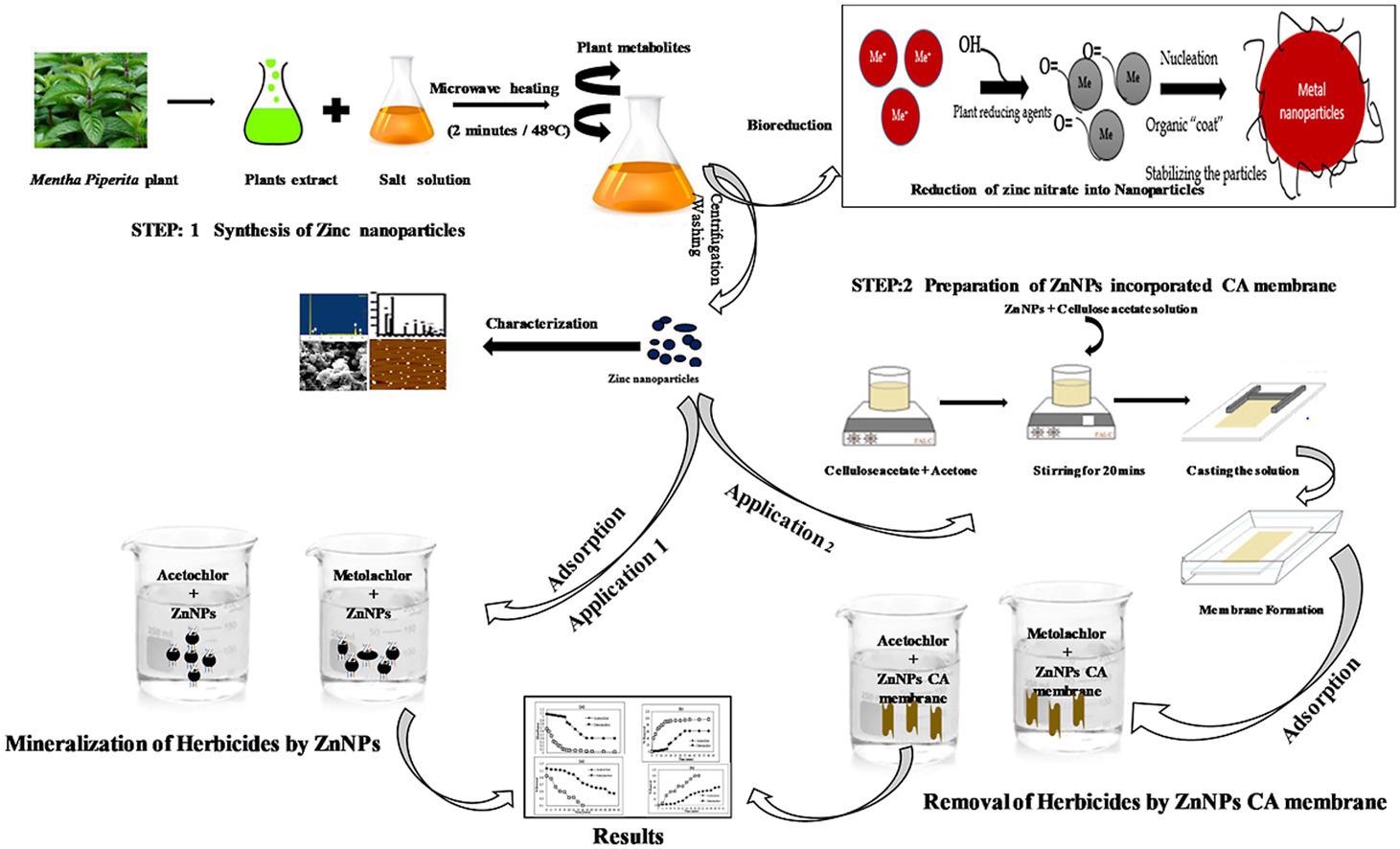The large surface area and high adsorption capacity properties of green synthesized zinc nanoparticle-impregnated cellulose acetate membranes show high efficacy in the removal of selective organic herbicides, as reported by a publication in the journal Cleaner Engineering and Technology.

Study: Incorporation of biogenic zinc nanoparticles in a polymeric membrane: Potential impact on the capture of organic herbicides. Image Credit: Roplant/Shutterstock.com
Urbanization and economic development have caused air and water pollution, affecting the ecosystem and the environment. A few of the major water pollutants are plastics, pesticides, and organic pollutants.
Pesticides used in the agricultural sector, are reported to be the main source of groundwater contamination, affecting the quality of drinking water.
Environmental assessment and water quality monitoring programs conducted by the Punjab private sector groundwater development program and reviewed by Mehmood et.al. have considered the use of different varieties of pesticides in Pakistan.
Amongst them, acetochlor and metolachlor are a group of herbicides that are widely used due to their effectiveness as pre and post-emergence herbicides. They are reported as leechers and contaminants among the pesticides that have the potential to contaminate groundwater.
They are highly water-soluble and have moderate to long persistence in soil and water. Under consumption, they have carcinogenic effects and could disrupt the endocrine and induce oxidative stress in humans.
Out of total pesticide contamination, 40% is through herbicides. It is thus important to develop a system to remove contaminants from water bodies.
Nanotechnology for Water Purification:
Nanomaterials have been found to be very effective as water treatment systems. Due to their properties of high surface area, high reactivity and strong adsorption capacity, nanomaterials such as zero-valent metal nanoparticles, metal-oxide nanoparticles, carbon nanotubes, and graphene have been extensively studied.

Graphical abstract. Image Credit: Shad et. al., Cleaner Engineering and Technolgy
Applications of nanomaterials in the removal of heavy metals, organic and inorganic pollutants from water are reported in many studies. Zero-valent nanoparticles like iron nanoparticles have been reported to be efficient in water contaminant removal systems.
Zinc Nanoparticles Incorporated Membranes for Herbicide Removal:
In a study conducted by Shad et. al. at the Hazara University Pakistan, in collaboration with the University of Birmingham UK, green synthesized Zinc (Zn) nanoparticles were studied for the removal of acetochlor and metolachlor herbicides from water.
In this study, extracts of Mentha leaves were used as reducing agents for the synthesis of Zn nanoparticles. High purity and crystallinity of the synthesized Zn nanoparticles with a size of approximately 36 nm were reported.
Zn nanoparticles were dispersed in a solution containing organic herbicides, and the absorption spectra of the solutions were taken at regular intervals. The results showed that with the increase in the concentration of nanoparticles, more active sites were obtained for the adsorption of organic herbicide ions.
The efficacy of Zn nanoparticles was further improved by integrating the nanoparticles in cellulose acetate membranes, which are processed from wood pulp. This further reduced the risk of the release of Zn nanoparticles into the environment. This cellulose acetate is a renewable source and is biodegradable.
The Zn nanoparticles were reported to be fully dispersed in the cellulose acetate membrane, which acted as a filter for water treatment.

Characterization of the zero-valent Zn NPs: (a) XRD analysis of the synthesized Zn NPs. (b) SEM image of the Zn NPs. (c) Elemental composition of the Zn NPs as determined by EDX analysis. (d) Particle number and size distribution of the Zn NPs by NTA with the inset showing the Brownian motion of the Zn NPs in water. Image Credit: Shad et. al., Cleaner Engineering and Technolgy
The adsorption of herbicides was reported to be higher with the Zn nanoparticle embedded cellulose acetate membrane compared to bare Zn nanoparticles.
The report shows that the time taken for the removal of 99.8% of metolachlor was 20 minutes, while 30 minutes were taken for the removal of 61.4% of acetochlor from the aqueous solution.
Nanoparticles have large adsorption sites and a high surface area, which enables them to be used as herbicide adsorbents. Supporting the nanoparticles in membranes helps avoid rapid oxidation and hydrolysis of the nanoparticles.
The agglomeration and precipitation that occurred in the case of bare nanoparticles were avoided when the nanoparticles were supported in the membrane.
Future Perspective of Zinc Nanoparticles Based Membrane Filters:
This study reported a convenient and efficient method for the removal of herbicides from water.
It was reported that after repeated use of the membrane for herbicide removal, a saturation of active sites on the Zn nanoparticle surface will occur, after which the membranes are found to be ineffective.
Methods for de-adsorption of herbicides have to be explored for re-deploying the membranes.
Further, the Zn nanoparticle-embedded cellulose acetate can be utilized as an on-farm bio purification system for treating contaminated water from farms.
This eco-friendly method opens up new methods of using nanoparticle-supported membranes for the application of water purification.
References and Further Reading:
Shad et. al. (2021) Incorporation of biogenic zinc nanoparticles in a polymeric membrane: Potential impact on the capture of organic herbicides Cleaner Engineering and Technology p.100339 https://www.sciencedirect.com/science/article/pii/S2666790821002998?via%3Dihub
Mehmood et. al. A review on emerging persistent organic pollutants: Current scenario in Pakistan Human and Ecological Risk Assessment: An International Journal 23 1 https://www.tandfonline.com/doi/full/10.1080/10807039.2015.1133241
Wu et. al. (2005) Preparation of cellulose acetate supported zero-valent iron nanoparticles for the dechlorination of trichloroethylene in water. Journal of Nanoparticle Research 7 469 https://link.springer.com/article/10.1007%2Fs11051-005-4271-5
Ursino et. al. (2018) Progress of nanocomposite membranes for water treatment Membranes 8 18 https://www.mdpi.com/2077-0375/8/2/18
Disclaimer: The views expressed here are those of the author expressed in their private capacity and do not necessarily represent the views of AZoM.com Limited T/A AZoNetwork the owner and operator of this website. This disclaimer forms part of the Terms and conditions of use of this website.